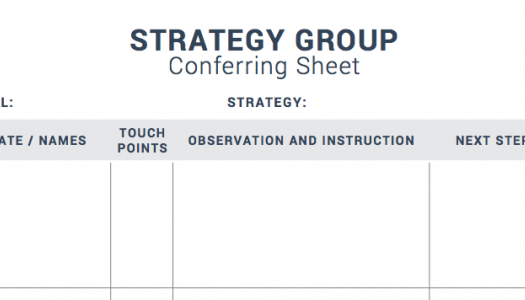Grouping Students by Need Instead of Level
Join Our Community
Access this resource now. Get up to three resources every month for free.
Choose from thousands of articles, lessons, guides, videos, and printables.
Small-group instruction can be a powerful way to maximize our teaching time in the classroom. When we first began our journey of teaching small groups, we put children together by levels and they read from multiple copies of the same text. It wasn't the most efficient way of operating because even though students were at the same reading level, their needs were different. Some read smoothly but didn't understand. Others understood beautifully, but read below fluency targets and without expression. We had simply taken the whole-group problem of different children with different needs and made it a small-group problem. Having children in a small group based on need rather than level remedied this issue completely.
In this video, Joan and Carrie are working together with a small group in which the reading levels range from early first grade to late second grade. Each student has comprehension as a goal and needs to learn the strategy Check for understanding. After Joan models the strategy, children practice with different books.
In this second part of the series, we get a chance to see a beginning reader with poor comprehension as she begins to use the strategy. She normally reads an entire book without being able to recall any important details. Joan shows her how to back all the way up and read shorter sections of the book, stopping more frequently to check for understanding. This is key to starting her on a journey to attending to and comprehending what she reads.
The initial secret to the strategy is to stop and then check for understanding. If you have students who struggle to remember what they just read when they pause, you may need to scaffold a little more, prompting children to say the who and the what of what they just read. These two simple nudges can make the difference between the silent, blank stare of a student struggling with Comprehension and a student who can remember what was just read.
Now Carrie and Joan debrief the small-group lesson that just took place. You will get a peek into how the conferring notebook was used.







